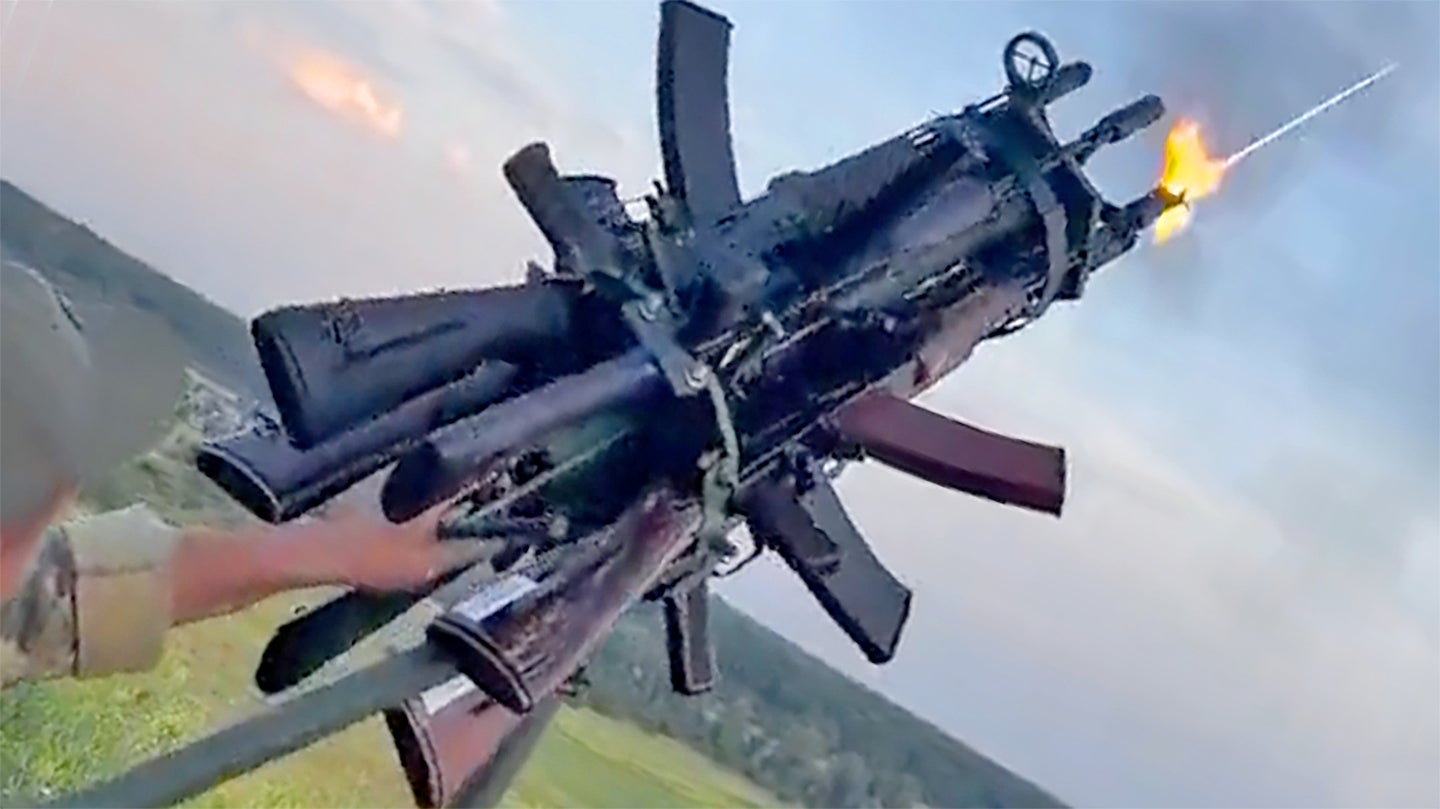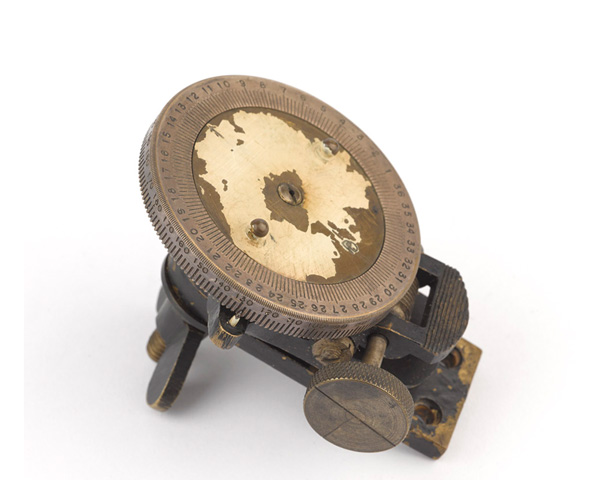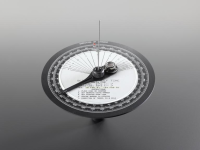KevinB
Army.ca Relic
- Reaction score
- 29,311
- Points
- 1,260
Again the AMX would be a decent fire support vehicle for those Hummer groups attacking isolated targets.Howsabout a HUMVEE?
But frankly I’d still rather have an ABCT in that situation

Again the AMX would be a decent fire support vehicle for those Hummer groups attacking isolated targets.Howsabout a HUMVEE?
Thank God we're finally safe from enemy air!
Seriously though, at least it's finally a step in the right direction.
What weapon systems do they have?
Not really.I see that Corps 86 is still alive and well then?
If it helps, my old man said in WW 2 4LAA Regt started off with benches pretending to be 40mm Bofors.
move command posts further from the lines and fortify them
getting off the radio.
commandeering the Ukrainian telecommunications network on the occupied territories, which is dense and robust,"
"data-centric command posts" that would take advantage of technology such as the cloud
Command and control would be offered as a service as needed
virtual reality.
"In a virtual world, commanders could replicate, expand, traverse, and interact as needed with their entire physical command post and never have to leave the room or vehicle they are in"
move command posts further from the lines and fortify them
virtual reality.
"In a virtual world, commanders could replicate, expand, traverse, and interact as needed with their entire physical command post and never have to leave the room or vehicle they are in"
getting off the radio.
commandeering the Ukrainian telecommunications network on the occupied territories, which is dense and robust,"
"data-centric command posts" that would take advantage of technology such as the cloud
Command and control would be offered as a service as needed
Pace Ben Stein"If something cannot go on forever, it will stop."
Ukraine's attacks on Russian commanders have the US Army worried about its own 'fat and ponderous' command posts
Michael Peck
Jul 6, 2023, 5:11 AM MDT
Ukraine's success in destroying Russian command posts has raised a troubling question for the US military: If Ukraine can do this to Russian headquarters, can other militaries, especially China's, do it to American HQs?
Command posts are battlefield nodes for commanders, intelligence and communications specialists, and other troops who oversee military operations. They are usually packed with electronic equipment and are hubs for vehicle traffic, giving them a distinct electronic and physical footprint.
In recent wars, facing diminished threats from the air and long-range weapons, US Army command posts have gotten larger, with more people and more emissions, and can easily be spotted and struck by the sensors and precision weapons now crowding the battlefield.
"Our command posts have mutated away from the lean, mean, killing machines we need and are instead fat and ponderous," three American officers said in an essay in Military Review, the Army's professional journal.

A command post set up at the National Training Center at Fort Irwin in California. US Army/Col. Scott Woodward
The Ukraine war illustrates that the most vulnerable part of an army is its brain. Disrupt its command and control, and even the strongest unit becomes almost helpless.
That's exactly what Ukraine did in summer 2022 when it used new US-supplied HIMARS GPS-guided rockets to target Russian command posts near the front lines. The resulting disruption helped Ukraine take large swathes of territory.
In battles around Chornobaivka, near the southern Ukrainian city of Kherson, Ukrainian strikes hit Russian command posts, known as CPs, at least 22 times and killed the commander of the 49th Combined Arms Army.
"This sapped Russian momentum and prevented consolidation of gains, which ultimately led to their expulsion," said the essay's authors, who included Lt. Gen. Milford Beagle Jr., the commander of the US Army's Combined Arms Center at Fort Leavenworth in Kansas.
This may be a major reason for the stunningly poor performance of Russian troops in Ukraine.
"Pinning Russian woes solely on ineptitude, while true to some extent, downplays the effect Ukrainians are having in systematically dismantling their enemy's command-and-control system through multidomain targeting," the authors wrote.
Coping with these attacks undercuts Russian-command efficiency. Russian HQs were pulled back some 75 miles from the front lines, which "imposed significant tactical challenges on Russian forces," a recent report by Britain's Royal United Services Institute think tank said.

A destroyed Russian army command post on March 13, 2022. Ukrainian Armed Forces
The problem is that US Army CPs are just as vulnerable: "Contemporary tented command posts — with their radio frequency emitting antennas, dozens of generators and vehicles, and extensive support requirements — are easily targetable to even the untrained eye," the Military Review article said.
This is the result of command and control becoming more sophisticated, as command posts must send and receive a constant stream of information. The price is that they are burdened with more tasks and equipment. In addition, years of counterinsurgency and small wars against opponents who lacked the means to target command centers have led to complacency.
"Western command posts have significant challenges with survivability," especially for higher-level HQs, the authors wrote, adding: "Even where efforts have been made to improve the mobility of command posts, our inability to hide the multispectral signatures of these massive structures coupled with persistent battlefield surveillance and precision weapons negates any benefit achieved."
Unsurprisingly, China has focused on disrupting US command-and-control capabilities. Should war come over Taiwan, China could employ a variety of means, including jamming, cyberwarfare, and attacks on communications satellites.
A US Army tactical command post. US Army
This isn't the first time the issue has come up. After World War II, former German panzer generals commented that NATO command posts had become too large, while German commanders had been able to conduct mobile warfare with much-smaller CPs.
Today's armies can hardly go back to the pre-Napoleonic days of tiny staffs and generals who personally led their troops into battle. Sensor-to-shooter chains and hypersonic missiles will enable ever-quicker strikes against enemy command centers.
But there are ways to at least partially mitigate risk. One is to move command posts further from the lines and fortify them against bombardment or special-forces raids. Russia has also turned to a more-old-fashioned solution: getting off the radio.
"This has often been achieved by commandeering the Ukrainian telecommunications network on the occupied territories, which is dense and robust," the Royal United Services Institute report said. "The Russian military then connects its CPs to the closest point in the civilian network via extended ground-laid telecommunications cables."
US Army soldiers during a command-post exercise at Fort Carson in Colorado. US Army/Sgt. James Geelen
Command posts connect with supporting units, such as air defense, via micro radio links through relay vehicles.
The Military Review article suggested the creation of "data-centric command posts" that would take advantage of technology such as the cloud. Command and control would be offered as a service as needed, creating such a small footprint in which CPs could be carried in a few armored vehicles.
"If we envision our command posts as less of a place or a thing and more as a service, it may be possible to vastly increase our agility," the authors wrote. "What happens if a corps, division, or brigade commander arrives, takes control of any command post, and receives the capability of the appropriate echelon with a push of a button?"
Another solution may be virtual reality.
"In a virtual world, commanders could replicate, expand, traverse, and interact as needed with their entire physical command post and never have to leave the room or vehicle they are in," the authors added.
Virtual reality would enable command posts to remain in secure locations far from the front. But this could also raise the specter of the "chateau generals" of World War I, who were mocked by their troops for never going near the trenches and remaining ignorant of what the war was really like.
Michael Peck is a defense writer whose work has appeared in Forbes, Defense News, Foreign Policy magazine, and other publications. He holds a master's in political science. Follow him on Twitter and LinkedIn.
I think we created data and C2 overload during our foray into COIN because we held the ground and maintained air and information superiority. That is near impossible in a contested cyber/EW domain.Command Posts and Vulnerability.... Too big, too slow, too easy to target.
This is an old discussion on this site.
Any new solutions?
Regrouping ....
1.Not sure that I like moving things farther and deeper as a viable strategy.
I expect that Zoom Warfare is upon us.
But at what level can commanders just "phone it in" and "work from home"?
On the other hand, people working from the right seat of a vehicle, communicating in a continuous Teams/Skype/Zoom meeting doesn't sound ridiculous. Especially if, as I previously suggested the chat starts in a group of 3 or 4 vehicles with one person in the group responsible for a single aspect of the group's operations.
I suggested that in an armoured troop, rather than getting rid of the fourth person in a tank when an autoloader is installed, that person should be promoted. One Loader could be given responsibility for the CUAS battle and given control of all the platoon's RWS guns and AD sensors (EO and Sound). Another could manage the UAVs and PGMs and handle the Recce battle. The Troop Leader and 2ic become the third and fourth "loaders" - freed from running their tanks they can concentrate on running their battles and their Troops respectively.
Even within the vehicle, all four people, all netted in with the same screens and the same joysticks can toggle around all stations, sensors and weapons and takeover any task of any of the others. Back seat driving is a thing.
The problem isn't the radio or voice comms, it's the on/off binary approach to them. Strobing IR/EMS activity is what gives folks away. The solution isn't going rad silent and going analog via DR or smoke signals; it's making it harder to find a needle on a stack of needles.Which brings us to comms and....
2.
Well that ain't gonna happen.
In fact the article appears to contradict itself in the next sentence when it says the Russians have had some success by
So far from "getting off the radio" the Russians have exploited an existing "dense and robust" "telecommunications network" that has proven very difficult to take down by either side.
So multi-nodal comms, redundancy, plug and play, easy to replace, easy to work around, and lots of technicians on hand to keep access to "the cloud" to maintain that never ending Zoom meeting (Now there is a definition of a hellish war!)
Those command posts are going to be impossible without that secure multi-nodal, and multi-modal (visible spectrum, radio, laser, satellite, flags, smoke, runners and riders) dense and robust comms net.
The solution is both. Disperse your CP elements and ensure they can move, communicate, shoot, and hide if needed.And finally this
3.
I think I might restate that.
Pace Ben Stein
We have debated whether or not their should be more of less autonomy of field elements (rugby vs football). This article proposes that C2 is something that lower will request from higher. Generals spitting coffee and cornflakes everywhere.
But perhaps they have a point.
If Comms break down then Command will not be able to Control. At that point the field elements will be left on their own recognizance to use their own best judgement on interpreting the Commander's Intent. Analogous to the Airborne Landings at Normandy - the paras scattered to the winds by the winds and forced to fall back on the Commander's Intent if they were to Continue the Mission.
At that point those field elements will be begging for some Command and Control, somebody to send them some shells and bombs for the targets in their front, somebody to haul their wounded to safety, somebody to supply beans and bandages and most importantly, somebody to get them the heck out of there.
Still, I suspect, that circumstances will dictate less Command and Control and more Autonomy simply due to difficulties in maintaining Communications.

Ukraine's attacks on Russian commanders have the US Army worried about its own 'fat and ponderous' command posts
US Army command posts "have mutated away from the lean, mean, killing machines" that they need to be, three officers said in a recent essay.www.businessinsider.com
I think we created data and C2 overload during our foray into COIN because we held the ground and maintained air and information superiority. That is near impossible in a contested cyber/EW domain.
If that domain is contested, you either fortify your connections to prevent exploitation (which makes you heavy and slows you down) or you move back to analog comms ( which takes time and slows you down). That makes C2 via Teams a damn near impossible task in a highly mobile ADO scenario.
The problem isn't the radio or voice comms, it's the on/off binary approach to them. Strobing IR/EMS activity is what gives folks away. The solution isn't going rad silent and going analog via DR or smoke signals; it's making it harder to find a needle on a stack of needles.
This involves creating systems that remain active in a mesh at all times. Instead of finding a node transmitting at periodic times and zeroing in on the receive station, you create a tens of kilometres wide comms bubble (similar to a cellular coverage map) that is a lot harder to pin point. It works even better if you're using other comms systems like civilian cellular infrastructure or AGA comms because you can't tell if it's a CP or a shopping mall.
The solution is both. Disperse your CP elements and ensure they can move, communicate, shoot, and hide if needed.
The massive JOC/TOC of the Afghanistan days is no more. It's can't be. And part of that is both adapting to the mesh dispersal, using proper Mission Command when needed, and being willing to have the Bde/Div/Corps commander be uncomfortable in a hooch for days on end.
Technology will get us half way, managing expectations will get us the rest.
Managing expectations....
Worth underlining that.
In the words of my countryman
"the best laid schemes of mice and men gang aft agley".
What is Plan B?
Not really.
There is both the UOR AD system for Latvia and the funded GBAD system in the works. There is a lot of preparatory work to be done for that. Both the ASCCs and the MRRs with 4 GS Regt have a role in AD that need integration and linking. Most of our previous 4 AD folks (including AD IGs and AIGs) are pretty close to timing out on their careers. Having a battery to call home will help on reviving their skills both tactically and technically.


Depends on your role and place in the food chain, really.
A Bn Comd or LIB Comd can often go "alright... back to pen and paper, just like Wellington did..." with less issue and frustration.
An AD Bty Comd or Int/ISTAR Coy Comd? Those links better have redundant redundancies that are redundant. Swivel chair human interfacing with automated, AI/ML/MR systems are what get people wiped out on a modern battlefield.
Plan B cannot be the same across all elements when it comes to C2.
Until then...Not really.
There is both the UOR AD system for Latvia and the funded GBAD system in the works. There is a lot of preparatory work to be done for that. Both the ASCCs and the MRRs with 4 GS Regt have a role in AD that need integration and linking. Most of our previous 4 AD folks (including AD IGs and AIGs) are pretty close to timing out on their careers. Having a battery to call home will help on reviving their skills both tactically and technically.


speaking from experience that is a very bad idea. I lazed some German Recce guys - and we almost got clobbered by Dutch Apaches due to that.Perhaps, if the radio is down than use your laser range finder as an Aldis lamp and trigger the Warning Receivers so you can communicate with morse.....
We still issue Silva Compasses lol. This idea that map and compass work is some lost art is farcical.Agreed and agreed. That is why I mentioned "multi-modal" as well as "multi-nodal". And that to include expedient and improvised solutions.
If the co-op phone on the back of the tank isn't working then beat on the hull with your rifle butt.
Perhaps, if the radio is down than use your laser range finder as an Aldis lamp and trigger the Warning Receivers so you can communicate with morse.....
Or ... do the other thing.
But the more over-lapping modes you have available, that you are equipped and trained for, the less disruptive the enemy's efforts are likely to be.
Is Morse still taught or has it gone the way of the Silva Compass and the Sextant? Semaphore?
I know they won't co-ordinate an air defence but they might jump some gaps in the net.
We still issue Silva Compasses lol. This idea that map and compass work is some lost art is farcical.

 psminstrumentation.com
psminstrumentation.com
I don’t know that I need a sextent when I have a map and a compass and hopefully some idea where I am.That is good to hear. I take nothing for granted these days.
The missed point I was trying to make is that when we adopt new things, or look to the future for new solutions, we often forget to check the attic to find the old, discarded solutions that used to work. Often those solutions can be re-used and improved.
For example

The Digital Sextant - PSM Instrumentation
Certified Digital Sextant to give you accurate location identification and a reliable back-up in case of GPS failure at sea.psminstrumentation.com
Or even
Day/Night Binoculars with Camera, Range Finder, Inclinometer, Clock and Compass. A software patch and you also have a solar compass and sextant. Simplified navigation without GPS.
I don’t know that I need a sextent when I have a map and a compass and hopefully some idea where I am.
I agree that some times we throw the baby out with the bath water, but more often than not archaic systems are discarded because they are simply archaic.
solar compass, also called Sun Compass, type of navigational instrument that uses the position of the Sun to establish bearing. The solar compass operates somewhat like a sundial. It indicates direction by employing the angle of the shadow cast by the Sun in conjunction with a compass card, a flat disk marked with points and degrees of direction. The solar compass is useful for navigation in the high latitudes, especially near the poles, where magnetic compasses become unreliable because of unpredictable fluctuations in the horizontal component of the Earth’s magnetic field. A simple form of the solar compass seems to have been devised by the Syrian Arabs of Aleppo as early as the 14th century.
Sun-compass
The LRDG also experimented with different sun-compasses. These were unaffected by magnetism, but had to be reset in line with the sun whenever they changed course to traverse rough terrain or avoid enemy troops. This again delayed the progress of their convoys.
Bagnold therefore invented a new sun-compass that could be used while still driving. This worked by turning its disc to match the approximate azimuth of the sun (taken from tables of different dates and latitudes) at regular times.
'Simply, it was a knitting needle set vertically in the centre of a horizontal disc, three inches in diameter... The face of the disc was graduated in 360 degrees of bearing, and the disc could be rotated in its fixed mounting to follow the sun through the day from east through south to west, according to a card giving the sun's azimuth every 10 minutes of the day.'
Brigadier Ralph Bagnold, 1945

Howard Sun Compass MK2, unknown maker, 1980-2000.
Solar compasses use shadows from the sun to help calculate the direction of travel. Dating back to its invention in 1836, sun compasses were often used by troops in the Second World War in desert combat. As sun compasses are not susceptible to interference from iron bearing metals like magnetic compasses are they were still being used during the early stages of the First Gulf War to help forces navigate across the largely featureless desert.


Solar compass | Navigation, Orientation, Sun-Tracking | Britannica
Solar compass, type of navigational instrument that uses the position of the Sun to establish bearing. The solar compass operates somewhat like a sundial. It indicates direction by employing the angle of the shadow cast by the Sun in conjunction with a compass card, a flat disk marked with pointswww.britannica.com
They were also found useful in the desert when there was no GPS.
And no landmarks.

Desert innovator: Bagnold's sun-compass | National Army Museum
The Long Range Desert Group were masters of navigation. They owed much of their success to the scientific talents of Major Ralph Bagnold, whose sun-compass invention revolutionised desert travel.www.nam.ac.uk
Sometimes even the archaic can offer solutions -

